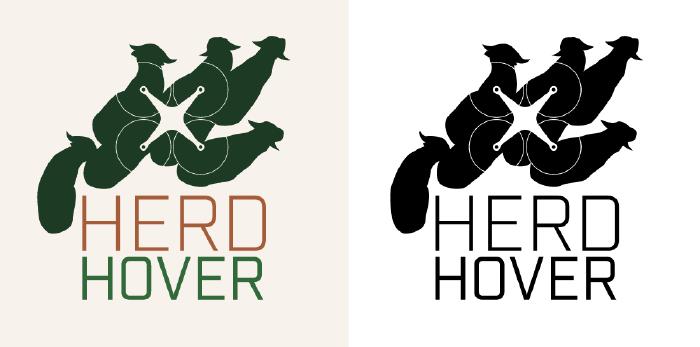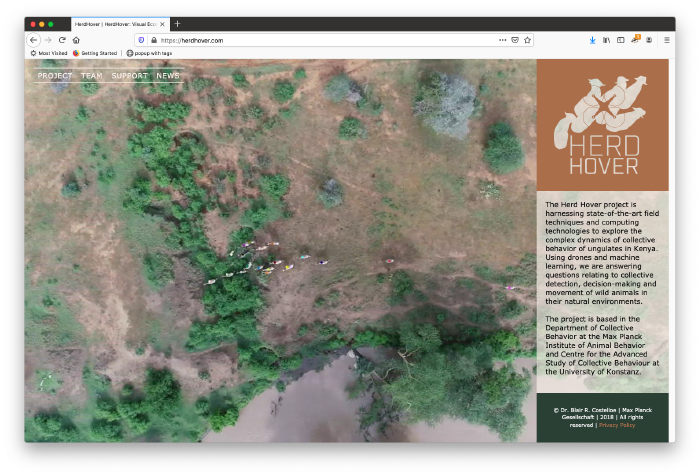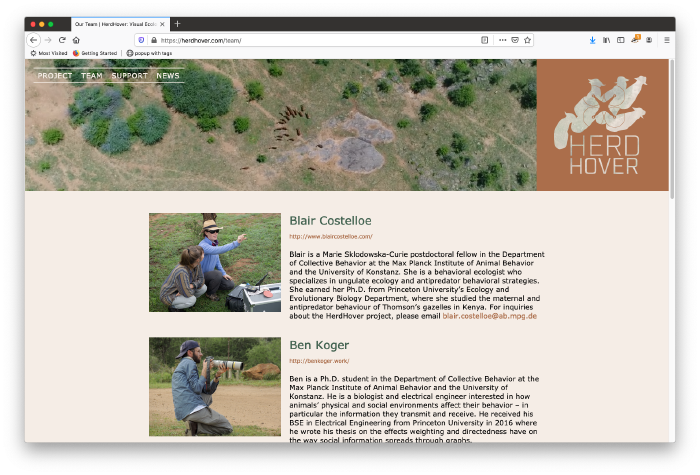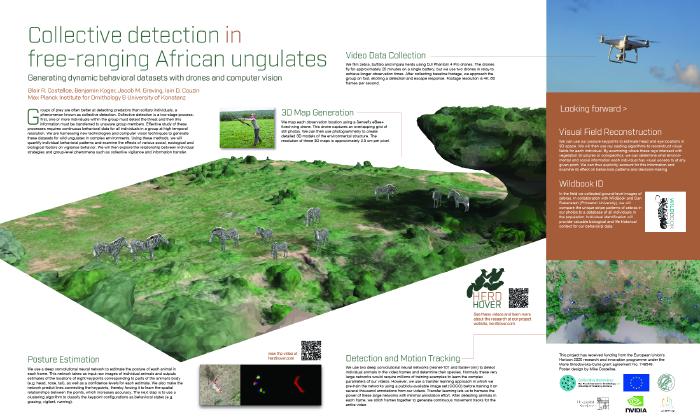HerdHover
Academic research projects benefit greatly from a unified visual identity. Their natural habitat is visual presentation, described and presented in figures, posters, and lecture slides. Materials are generated and shared by multiple team members from all over the academic hierarchy, so developing guidelines helps ensure consistency and cohesiveness in what can become a collected library of years of visual matter. A strong identity can help audiences recall and reengage after a talk or presentation, and compelling visual collateral can drive interest from academics outside the given field and in the general public.
From herdhover.com:
“The Herd Hover project is harnessing state-of-the-art field techniques and computing technologies to explore the complex dynamics of collective behavior of ungulates in Kenya. Using drones and machine learning, we are answering questions relating to collective detection, decision-making and movement of wild animals in their natural environments. The project is based in the Department of Collective Behavior at the Max Planck Institute of Animal Behavior and Centre for the Advanced Study of Collective Behaviour at the University of Konstanz.”

Herdhover began with brainstorming a name on a rainy afternoon in Kenya, and has matured into a full-fledged visual identity that has brought the website, conference posters and presentations from multiple researchers, and physical collateral into alignment.


The website itself is built with Hugo, compiling static, semantic HTML locally before deploying the static pages to a simple, database-free HTTP server, in this case an AWS S3 bucket, greatly reducing resource load and cost.
